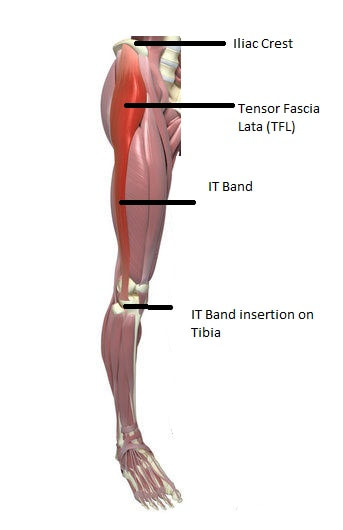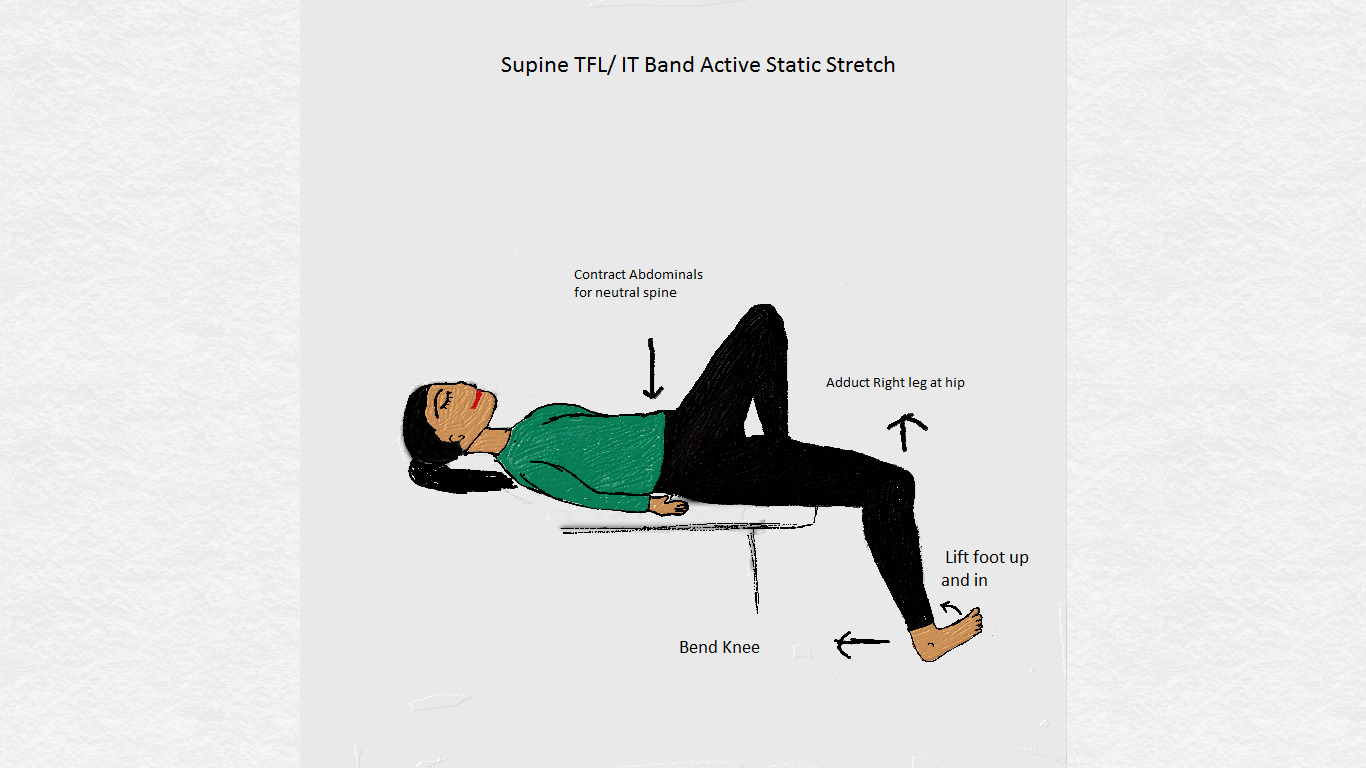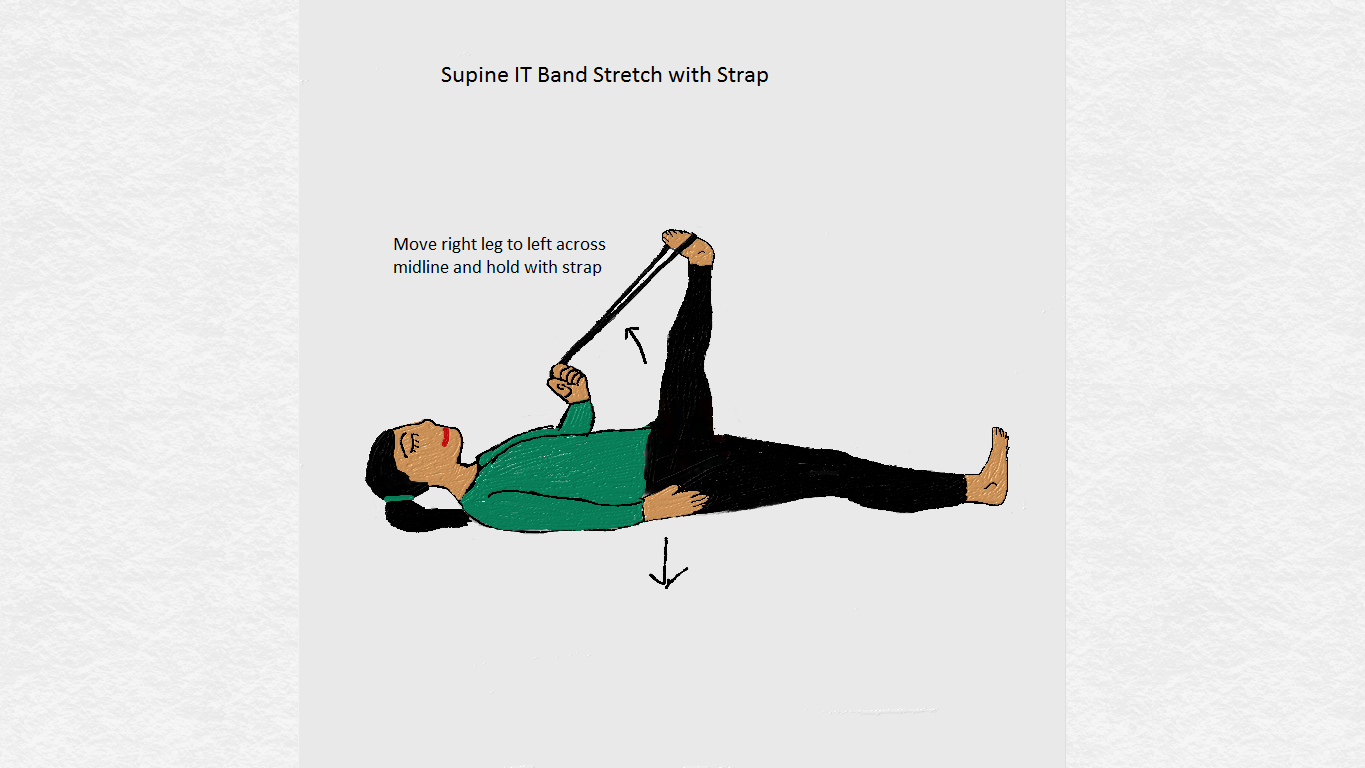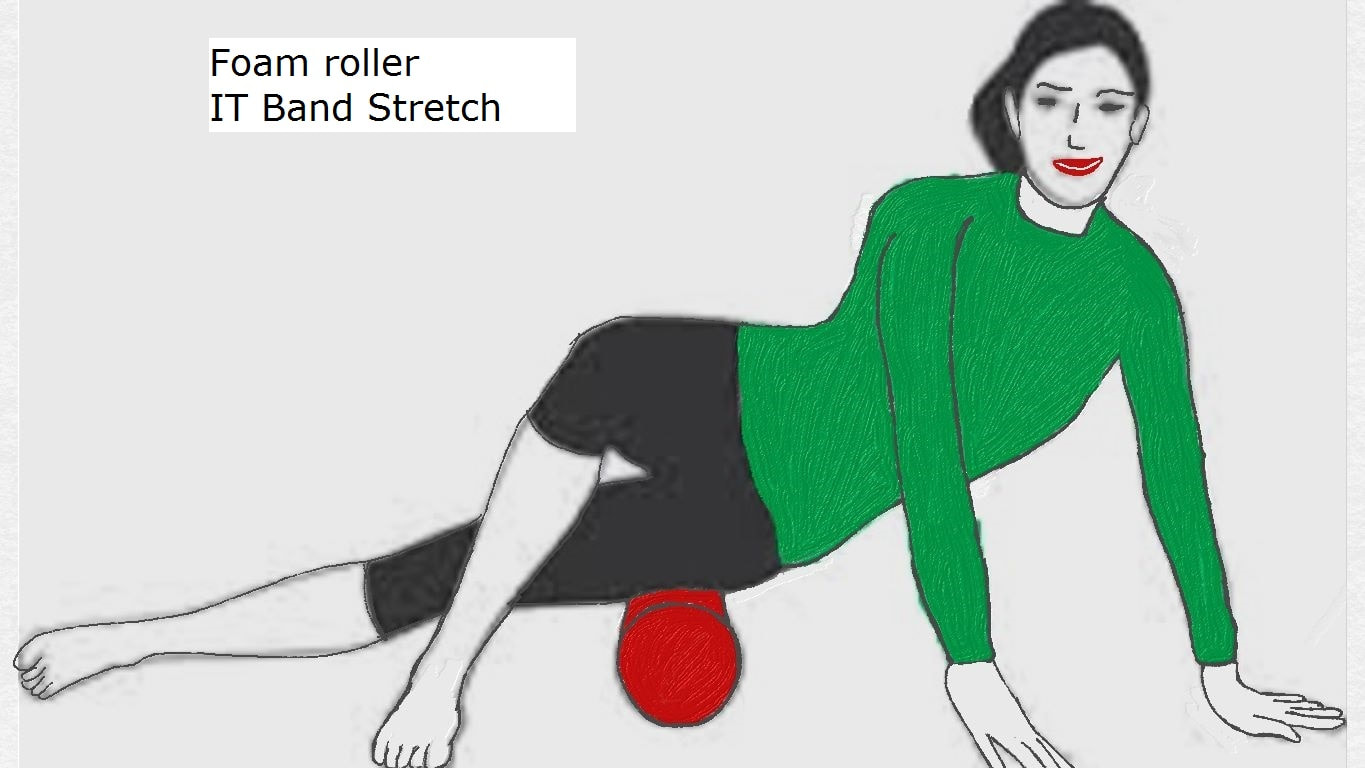|
This week I give due consideration to the Tensor Fascia Lata also known as the TFL and the Iliotibial or IT band stretch. The TFL/IT band is frequently found to be tight in people that walk, run, or ride bicycles, with discomfort/pain in the knee or hip area.
• The TFL is a muscle and it originates proximally from the anterior and outer portions of the iliac crest, the ASIS, and the notch below the ASIS. • The IT band is a fascial connective tissue which is composed histologically of both elastin (elastic connective tissue) and collagen (strong fibrous connective tissue). Fascial tissue surrounds muscles, tendons, and organs, and provides a support structure for the body. • The IT band arises from the iliac crest and receives contributions as a thickening from the Gluteus Maximus and TFL muscles, then runs along the outer length of the thigh, and inserts into the lateral epicondyle of tibia and sends some fibers to the retinaculum of the patella. • Along the way from its origin on the iliac crest, the IT band runs over the greater trochanter of the femur and the lateral femoral epicondyle, just above the knee joint. To lubricate areas where the fibrous tissue runs over bony prominences, bursa (fluid filled sacs), intervene between the bone and connective tissue. These are important, since it is the taut (tight) IT band rubbing against these bony prominences that causes what are popularly known as the IT band syndrome(pain near the outer side of knee joint/lower leg) and the Trochanteric bursitis (pain on outer side of the hip joint/ greater trochanter of femur), respectively. The bursa due to repeated friction get inflamed or it may be the inflammation and/ or strain of the connective tissue fibers itself. Since the IT band receives contribution from the TFL and Gluteus maximus, stretching these muscles will impact the IT band as well. The IT band is difficult to stretch actively and needs a lot attention to positioning and muscular engagement. It is ideally best impacted through soft tissue work like myofascial release of IT band and TFL and stretched best through passive stretch. That being said, let’s delve into the stretch: Passive Stretch: This is done in supine position with both legs straight on mat in neutral position. The therapist stabilizes the right pelvis at ASIS and flexes the right hip to clear the left leg, as the right leg is moved into hip adduction with the knee supported in extended position. The stretch is held for 5-30 seconds and then released for 15-30 seconds of rest before next repetition. Active Static stretch: i) In the supine position on a high mat or bed, scoot the legs out the side of the mat till the knee bends to 90 degrees and allow both the lower legs to dangle off the edge. Place a chair at the edge of the mat /bed initially, so you can rest your feet prior to the stretch (so that you do not arch the back due to weak abdominals or tight hip flexors). Bring the left foot onto the mat by bending the hip and knee. Allow the right leg to dangle off the mat by pushing the chair away from under the right foot. Bring the right hip into slight adduction and engage the abdominals to keep the spine neutral (if the lumbar spine arches, it indicates a tight TFL/hip flexors. Next raise the right foot up and in at the ankle joint/ foot, to engage the tibialis anterior muscle. This completes the stretch. Hold for 5-30 seconds maintaining the position. Rest for 15-30 seconds between the stretches. Active Dynamic Stretch: i) Half-kneeling: To stretch the right TFL/IT band, bring the right knee to the floor on a cushion with the shin resting on the floor and foot outstretched behind. The left foot rests on floor in front of the right knee. You may do this near a wall or support you can lean on. Make sure you start with hip over right knee and neutral, upright spine. Push the right hip outwards leaning onto wall/support. To deepen the stretch, shift body weight forward over the left leg bringing the right hip into extension, stretching the TFL further. Stretch With Tools or Equipment: i) Stretching with strap or gait belt: In supine lying position with legs extended and supported on mat/bed, loop a strap or gait belt around the right foot arches. Keeping the knee straight, raise the leg up from mat by flexing the hip joint and cross the leg to the left side across the midline of the body. Hold the other end of the strap in your hand and pull taut for support. The pelvis should be flat on the mat (with both sit bones in contact with mat), and not roll along with the right leg by lifting off the mat. ii) Stretching with the foam roller: With the foam roller across the mat, lie on it along the outer side of the right thigh. Gently roll along the length of the outer thigh from the iliac crest (bony ridge forming the top of the pelvis at your waist) to the outside of the knee joint, while the left foot and hands assist in the rolling motion. You may feel the tightness in certain localized areas and may want to focus rolling over the tight spot. As you approach the hip, roll slightly over to roll over the TFL fibers which are anterior-lateral (front- outer side) on the iliac crest.
0 Comments
Your comment will be posted after it is approved.
Leave a Reply. |
Details
AuthorAmi Gandhi is a licensed physical therapist in the state of California. She is the owner of StableMovement Physical Therapy, a small boutique practice in San Jose that offers patient centered, one-on-one, hands-on physical therapy. Archives
March 2018
Categories |



